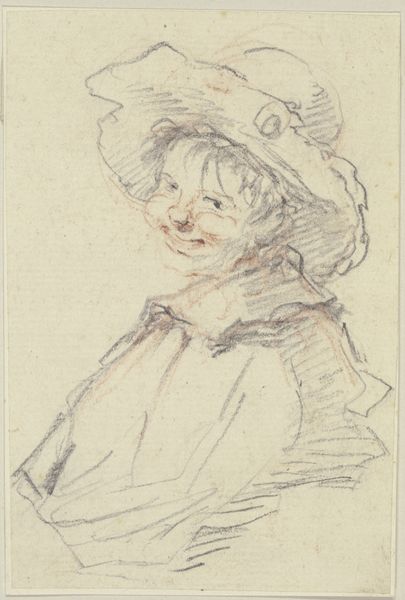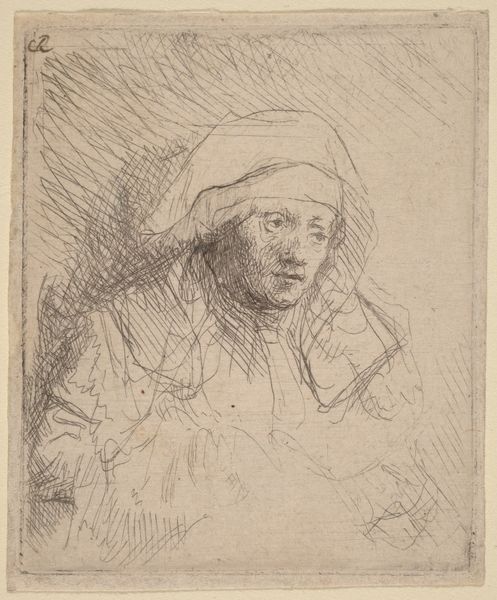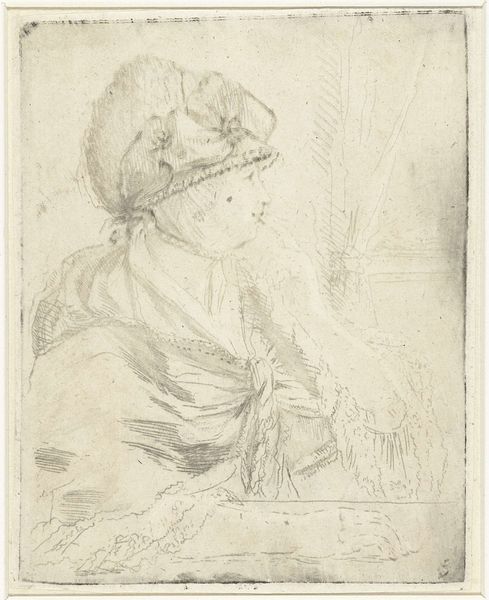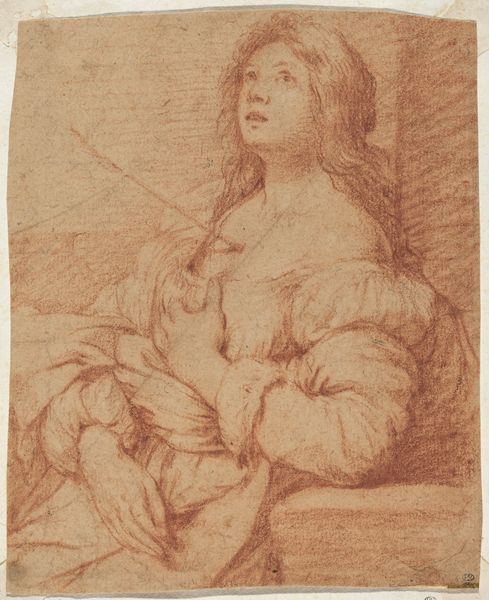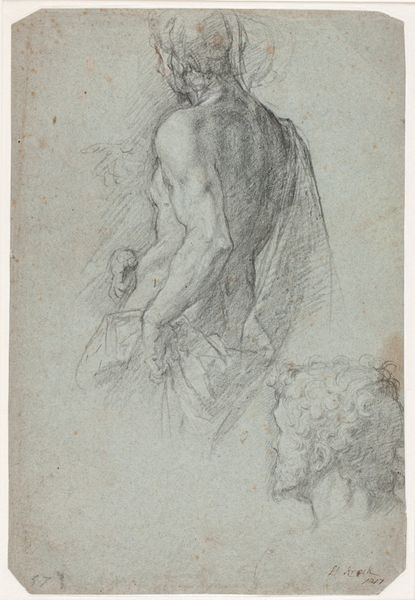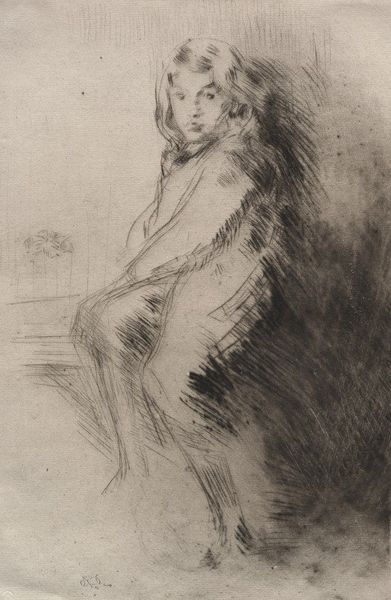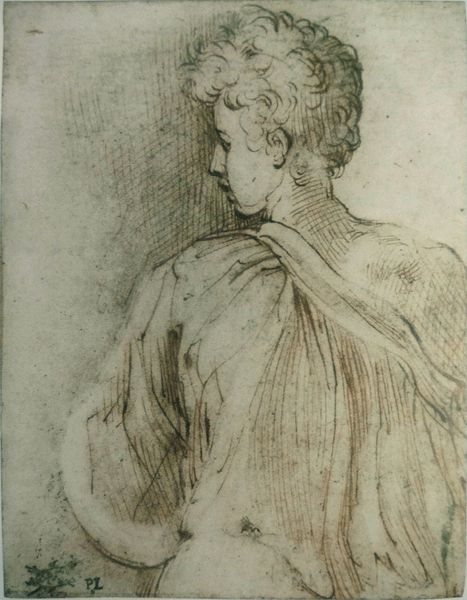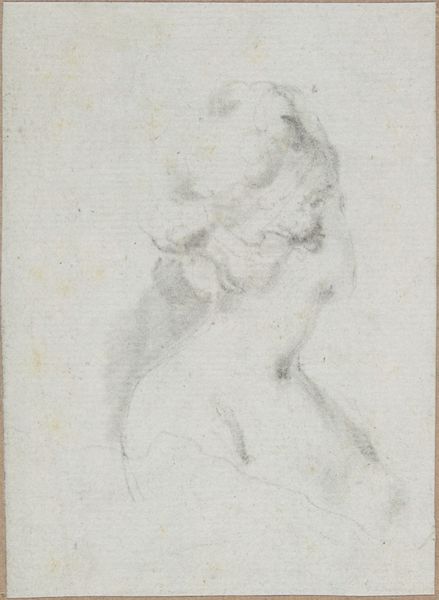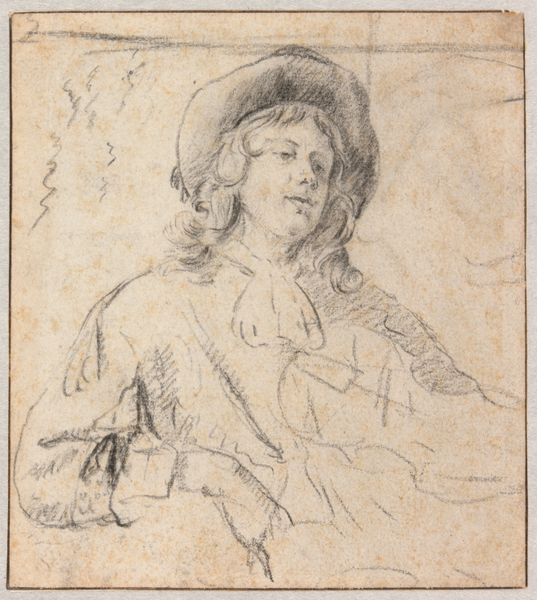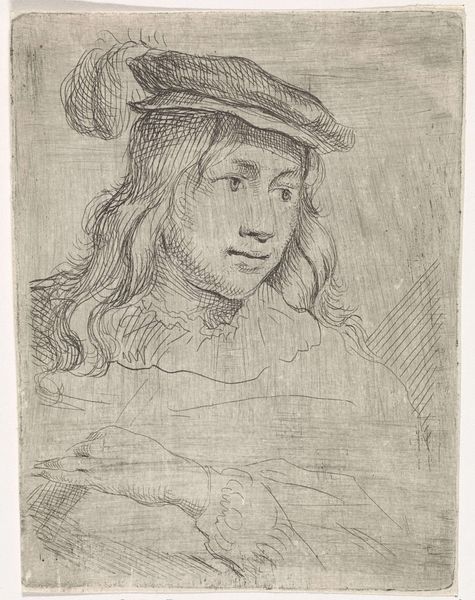
drawing, pencil
#
portrait
#
drawing
#
figuration
#
pencil
#
genre-painting
#
academic-art
Dimensions: 130 mm (height) x 107 mm (width) (bladmaal)
Editor: This is "Woman with a basket on her head," a pencil drawing by Thomas Worlidge, dating sometime between 1700 and 1766. I'm struck by how the loose lines create such a lively, almost unfinished quality. What's your take on this work? Curator: I see this drawing as deeply embedded in the social currents of 18th-century art and its institutions. Sketches like these often functioned as studies, part of an artist’s practice and training, but also as potential prints to be disseminated among a growing art-consuming public. Does the genre painting aspect speak to a particular social class, perhaps representing a romanticized view of the working woman? Editor: That’s an interesting point – the “romanticized view.” I hadn't considered how her portrayal could be more about what the upper classes *wanted* to see, rather than an accurate reflection. Curator: Exactly. The museum itself plays a role in framing that interpretation, doesn’t it? Think about the institutional context in which this image is displayed and the narratives it reinforces about labor and identity. Do we, by displaying it, subtly endorse a certain way of seeing this "woman"? Editor: So, it's not just the artist's intention but also the choices the museum makes that shapes our understanding? Curator: Precisely. How we exhibit and discuss it impacts its meaning and relevance today. Who is invited to view it, how does it reflect in the space and on the historical memory and artistic creation overall? Editor: I guess I never fully considered how much politics play into seemingly simple portrait drawings. Curator: Art is never created in a vacuum. It reflects the world around it, and institutions influence the way that reflection is perceived and given historical legacy. It's a valuable, complicated thought, wouldn’t you agree? Editor: Definitely something to consider for my art history essay, thank you!
Comments
No comments
Be the first to comment and join the conversation on the ultimate creative platform.
